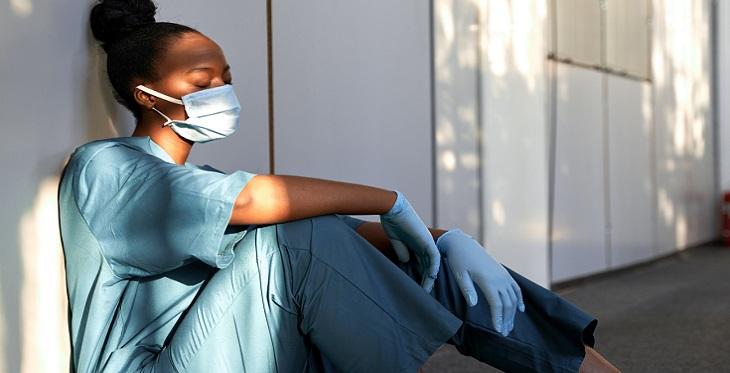
For many Americans, their first personal experience of being a hospital patient quickly becomes a crash course in the importance and value of having a skilled and dedicated bedside nurse. At a higher level, this points to the importance of a sufficient nursing staff which impacts the entire workflow of the hospital. Without sufficient bedside nurses, patients in the Emergency Room and Intensive Care Units cannot be moved to the floors, resulting in longer waiting times for care for those newly arriving. Beds that cannot be staffed are beds that do not exist for all practical purposes. Unfortunately, a shortage of nurses has long been a problem for hospitals across the United States. The coronavirus pandemic has brought this challenge to an entirely new level, resulting in a request by the American Nurses Association that the U.S. Department of Health and Human Services declare the current nursing staffing shortage a national crisis.
Nationwide, more than 1200 nurses have perished from COVID-19. Early in the pandemic, their jobs were made more dangerous by a shortage of personal protective equipment, but they persevered, even volunteering to relocate in hospitals to service areas with higher COVID-19 infection levels. As COVID-19 infections have increased, especially among younger, unvaccinated patients, more nurses are feeling physically and emotionally exhausted, dismayed by the amount of misinformation in the community, and distressed when they are unable to meet their own standards of care because of patient overload. Many are retiring early or shifting to less stressful career pathways outside of hospitals. This problem appears even more dire in rural communities, which suffer from an aging workforce and older patient populations with chronic diseases, lower nurse salaries, and a more intense workload. Rural hospitals may be more likely to lose nurses to large urban healthcare systems that can pay travel nurses much higher salaries and large signing bonuses, although even the large nurse recruitment agencies cannot fill all of the positions they currently have to offer.
As challenging as the COVID-19 pandemic has been, there are other factors that are also contributing to the current nursing shortage and well into the future. The large number of nurses in the baby boomer generation, those nurses born between 1946 and 1964, is a major concern. By 2029, it is projected that 71 million Americans will be 65 or older, with a longer lifespan and multiple chronic health conditions. One third of the nation’s nurses are themselves baby boomers and 640,000 are nearing retirement age. Approximately 170,000 nurses are entering the work force each year but the American Association of Colleges of Nursing claims that many qualified applicants to nursing schools are rejected because of a lack of teaching staff.
A positive outcome of the COVID-19 pandemic is that it has served to focus attention on the nursing shortage, present and future, seeking remedies that will both increase the number of future nurses and stabilize the profession for those nurses already working. The American Nurses Association is urging the Department of Health and Human Services to provide incentives such as federal and state tuition loan forgiveness programs for nursing students, especially those students willing to work in rural areas. Federal financial assistance to help nursing schools hire more instructors so that class size can be increased has also been proposed. To stabilize the nurse workforce now, particularly in rural areas, HHS is being encouraged to promote payment equity and retention incentives among nurses in various healthcare settings.
Fortunately, telehealth is proving to be a valuable asset in easing the stress of the national nursing shortage. It has already proven to be a valuable tool in nursing education at various levels. For instance, at The University of Arizona’s College of Nursing, a telehealth certificate program enables students to participate remotely in supervised learning sessions in their Family Nurse Practitioner Program.
Nationally, at least 35 states and the District of Columbia have mandated that health plans cover telehealth services. Often, nurses are providing the lead in virtual care delivery, especially for chronic disease and patient medicine management. In primary care practices, nurses can take vital signs virtually, avoiding exposure to the COVID-19 coronavirus in doctors’ offices. By streamlining the utilization of nurses in the hospital setting, telehealth enables nurses to educate and support their patients with more time spent establishing rapport and trust. In hospitals with electronic intensive care units (eICUs), telehealth nurses are able to monitor many more patients than they could as a bedside nurse. The American Telemedicine Association has reported that telehealth could provide upwards of 50% of healthcare services within the next five years. Telehealth is very likely to be part of the solution to our national nursing shortage.


